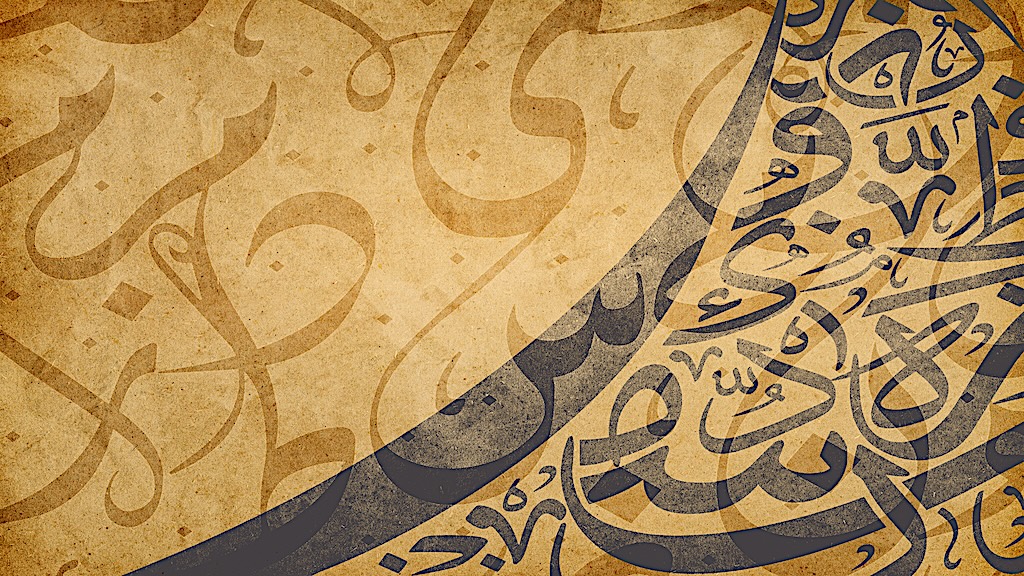The sciences of the Arabic language are a set of disciplines aimed at studying, understanding, and analyzing the language in depth. These sciences were originally developed to preserve the Qur’an and protect Arabic from alteration or loss. Over time, they became the foundation for studying Arabic literature, grammar, and rhetoric.
They include twelve major branches: Grammar (Nahw), which studies sentence structure and inflection rules; Morphology (Sarf), which examines word patterns and conjugations; Rhetoric (Balagha), with its three subfields (Ma‘ani, Bayan, Badi‘) focusing on eloquence and style; Phonetics, which analyzes the articulation and characteristics of sounds; Semantics, which explores word meanings and context; Philology (Fiqh al-Lugha), which compares and studies the evolution of words; Prosody (‘Arud), which studies the meters of Arabic poetry; Qafiyah, which deals with rhymes in poetry; Orthography (Imlaa), which governs correct spelling; Calligraphy (Khatt), which focuses on the beauty of writing; and Lexicography, which compiles and explains vocabulary.
Together, these branches make Arabic a precise and expressive language, giving learners the ability to understand texts accurately and express themselves with clarity. Thanks to these sciences, Arabic has remained a language of religion, science, and culture, still evolving and adapting to modern times.
عُلُومُ اللُّغَةِ العَرَبِيَّةِ هِيَ مَجْمُوعَةٌ مِنَ التَّخَصُّصَاتِ الَّتِي تَسْعَى لِدِرَاسَةِ وَفَهْمِ اللُّغَةِ العَرَبِيَّةِ بِطَرِيقَةٍ مُحَدَّدَةٍ وَدَقِيقَةٍ. تَمَّ إِنْشَاءُ هَذِهِ العُلُومِ لِخِدْمَةِ القُرْآنِ الكَرِيمِ، وَلِحِمَايَةِ اللُّغَةِ العَرَبِيَّةِ مِنَ التَّحْرِيفِ والفِقْدَانِ كَوَسِيلَةٍ تواصل. وَمَعَ مُرُورِ الوَقْتِ، أَصْبَحَتِ بِمَثَابَةِ العَمُودَ الفِقْرِيَّ لِلأَدَبِ وَالنَّحْوِ وَالبَلَاغَةِ.
تَشْمَلُ هَذِهِ العُلُومُ اثْنَيْ عَشَرَ فَرْعًا رَئِيسِيًّا، وَهِيَ: النَّحْوُ، الَّذِي يَدْرُسُ تَرْكِيبَ الجُمْلَةِ وَقَوَاعِدَ الإِعْرَابِ؛ وَالصَّرْفُ، الَّذِي يَبْحَثُ فِي بِنْيَةِ الكَلِمَاتِ وَتَصْرِيفِهَا؛ وَالبَلَاغَةُ بِفُرُوعِهَا الثَّلَاثَةِ (المَعَانِي، البَيَان، البَدِيع) لِفَهْمِ جَمَالِ الأُسْلُوبِ وَقُوَّةِ التَّأْثِيرِ؛ وَعِلْمُ الأَصْوَاتِ، الَّذِي يَدْرُسُ مَخَارِجَ الحُرُوفِ وَصِفَاتِهَا؛ وَعِلْمُ المَعَانِي، الَّذِي يَهْتَمُّ بِدَلَالَاتِ الأَلْفَاظِ وَالسِّيَاقِ؛ وَفِقْهُ اللُّغَةِ، الَّذِي يُقَارِنُ بَيْنَ اسْتِعْمَالَاتِ الكَلِمَاتِ وَتَطَوُّرِهَا؛ وَعِلْمُ العَرُوضِ، الَّذِي يَدْرُسُ أَوْزَانَ الشِّعْرِ وَقَوَافِيَهِ؛ وَعِلْمُ القَوَافِي، الَّذِي يَهْتَمُّ بِنِهَايَاتِ الأَبْيَاتِ الشِّعْرِيَّةِ؛ وَعِلْمُ الإِمْلَاءِ، الَّذِي يُضْبِطُ كِتَابَةَ الكَلِمَاتِ؛ وَعِلْمُ الخَطِّ، الَّذِي يُعْنَى بِجَمَالِ الكِتَابَةِ؛ وَعِلْمُ المَعَاجِمِ، الَّذِي يَجْمَعُ مُفْرَدَاتِ اللُّغَةِ وَيَشْرَحُ مَعَانِيَهَا.
نجحت هَذِهِ الفُرُوعُ مُجتَمِعَةً فِي أَن تَجْعَلَ العَرَبِيَّةَ لُغَةً دَقِيقَةً وَعَمِيقَةً، مِمَّا أَتَاحَ للمُتَعَلِّمِ القُدْرَةَ عَلَى فَهْمِ النُّصُوصِ وَالفَصَاحَةِ فِي التَّعْبِيرِ. وَبِفَضْلِ هَذِهِ العُلُومِ، حَافَظَتِ العَرَبِيَّةُ عَلَى مَكَانَتِهَا كَلُغَةِ دِينٍ وَعِلْمٍ وَثَقَافَةٍ، وَمَا زَالَتْ قَادِرَةً عَلَى التَّطَوُّرِ وَمُوَاكَبَةِ العَصْرِ.
https://forms.gle/fk38DQqvwmUtQf3Q8 اختبر نفسك
Test yourself https://forms.gle/YsbqDw9arE2YJKKG9

